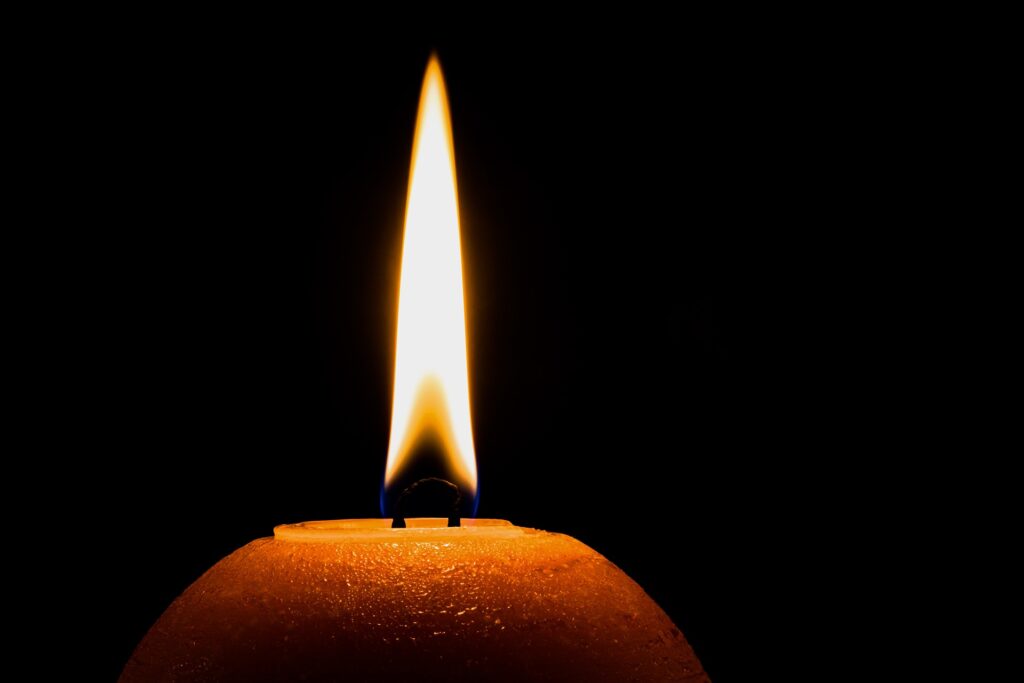It’s no secret that power outages and load shedding are realities for many around the world. With that in mind, it’s important to be prepared for when the lights go out! Having a backup power system in place can help you stay productive and comfortable when the power goes out. In this blog article, we’ll outline the basics of setting up a backup power system for when the lights go out, so you don’t be left in the dark!

Understanding the basics of backup power
It’s no surprise that loadshedding has become a part of life for many in South Africa. With unpredictable power outages lasting up to several hours, it’s vital to have a backup plan in place to keep your home or business running smoothly. But what is loadshedding and why is backup power so important?
Loadshedding is the intentional interruption of electricity supply by an electricity provider to avoid damage to the electricity grid. When the electricity grid is overloaded, power outages occur as a way of controlling the demand for electricity.
Backup power systems allow for a continuous supply of electricity during loadshedding, ensuring that important appliances and electronics remain powered and operational.
The benefits of using backup power during loadshedding are numerous. Not only do they provide a reliable source of electricity, they can also save you money in the long run by reducing your reliance on electricity from the grid.
Additionally, backup power systems can help protect your home and business from damage due to power outages.
When it comes to choosing the right backup power system for your needs, there are several factors to consider.
First, consider the size of your home or business and the number of appliances and electronics that need to be powered. This will help you determine the size of backup power system required. Next, consider the cost of the system and the type of fuel it uses. Finally, research the best options available in your area.
Finally, it’s important to consider the cost of setting up a backup power system. Depending on the size and type of system you choose, costs can vary significantly.
However, the long-term savings you will gain from reduced reliance on electricity from the grid and protection against power outages make the cost of setting up a backup power system well worth the investment.
Evaluating backup power needs
When load shedding strikes, it can leave us feeling helpless and powerless. But with the right backup power and preparation, you can keep your home or business running without interruption.
Here’s a guide to help you evaluate your backup power needs and make sure that you’re prepared for the next load shedding event.
Understanding your power needs is the first step in setting up backup power. Calculate the wattage of all the items you need to power during load shedding, including lights, TV, refrigerator, and other appliances. This will help you determine the size of the generator and battery backup system you will need to meet your needs.
When investing in a generator or battery backup system, it’s important to choose the right size and type of equipment for your needs. You don’t want to buy a generator that’s too small or too large for your needs, as this can lead to safety issues. Talk to a professional to make sure you get the right equipment.
Safety is also a major concern when using backup power. Make sure that you follow all safety protocols when using a generator or battery backup system. This includes using a transfer switch to prevent backfeeding the power lines and keeping the generator away from your home or business.
Finally, it’s important to plan ahead and assess your backup power needs before load shedding occurs. This will give you time to purchase the right equipment and make sure that you’re prepared when the power goes out.
Don’t be left in the dark when load shedding strikes. Take the time to evaluate your backup power needs and invest in the right equipment so that you can stay powered up during outages.
Choosing the Best Backup Power Source for Your Need’s
When load shedding strikes, you don’t want to be left in the dark. Having a reliable backup power source is essential for keeping your lights on and your home or business running smoothly during power outages. But with so many different types of backup power sources available, it can be difficult to decide which one is right for you.
To help you make the best decision for your needs, let’s take a look at the different types of backup power sources and their advantages and disadvantages. The most common types of backup power sources are generators, solar panels, and battery banks.
Generators are the most commonly used backup power sources and offer the most reliable power. Generators come in a variety of sizes and power outputs, so you can choose one that meets your needs. They are relatively easy to install and maintain but can be loud and produce exhaust fumes.
Solar panels are a great option for those looking for a clean and sustainable source of backup power. They are easy to install and require little to no maintenance, but the initial cost can be high. Additionally, solar panels are only effective when there is direct sunlight and can be unreliable in cloudy or rainy weather.
Battery banks are a great option for those looking for a more cost-effective solution. They are easy to install and require little to no maintenance, but the batteries need to be replaced every few years. Additionally, battery banks are not as reliable as generators and can be unreliable in extreme temperatures.
When deciding which type of backup power source is right for you, consider your budget, the size of your home or business, the power output you need, and the conditions in which you will be using the backup power source. You should also take into account the installation and maintenance costs associated with each type of backup power source.
Once you’ve chosen your backup power source, it’s important to properly set it up and maintain it. Make sure you read the instructions carefully and follow all safety protocols. It’s also important to regularly check your backup power source to ensure it is working properly and make any necessary repairs.
Don’t be left in the dark – use this guide to help you choose the best backup power source for your needs. With the right backup power source and a little bit of maintenance, you can be sure that you’ll never be left in the dark during load shedding.
Installing and maintaining a backup power system
As South Africa continues to grapple with the realities of load shedding, many businesses and households are left in the dark. While this can be an inconvenience, the effects of load shedding can be even more devastating for businesses that rely on electricity.
To ensure that you don’t lose power when the lights go out, it is essential to have a reliable backup power system in place.
Installing and properly maintaining a backup power system can be a daunting task. However, with the right system in place, you can be sure that you won’t be left in the dark during load shedding.
Here are some tips for setting up and maintaining a backup power system:
- Choose the right system for your needs: The type of backup power system you need depends on the size and complexity of your power needs. Generally speaking, a generator is a good choice for larger, commercial operations, while an inverter is a better option for smaller, residential applications.
- Monitor your system regularly: To keep your backup power system running smoothly, it’s important to regularly monitor and maintain it. Check oil and coolant levels, and inspect for any signs of damage or wear and tear.
- Have a plan in place: When the lights go out, it’s important to have a plan in place for how you’ll manage your backup power system. Make sure everyone involved with your system is aware of what to do in the event of a power outage.
By taking the time to set up and maintain a reliable backup power system, you can be sure that you won’t be left in the dark during load shedding. With the right system in place, you can continue to operate your business or household with minimal disruption.
Tips for efficient use of backup power during load shedding
Load shedding is an unavoidable reality in many parts of the world. It’s important to be prepared and have a backup plan in place to ensure that you don’t have to suffer through long periods of power outages.
Installing a backup power system is an effective way to ensure that your home or business remains operational during times of load shedding.
A backup power system provides many benefits, including cost savings and improved reliability of power. By having a backup system in place, you can avoid the inconvenience and expense of having to replace any electronics that may be damaged due to the power going out.
Additionally, you’ll have the assurance of knowing that you won’t be left in the dark during a power outage.
When it comes to choosing a backup system, there are several options available.
You can use a generator, solar system, or battery-powered system. The type of system you choose will depend on your budget, the size of your home or business, and the amount of power you need.
Once you’ve chosen a backup system, it’s important to use it efficiently during load shedding. Here are some tips to help you get the most out of your backup power system:
• Install surge protectors to protect your electronics from power spikes.
• Use energy-saving appliances to reduce the amount of power you need to use.
• Unplug any appliances that aren’t in use to conserve energy.
• Make sure your backup system is regularly maintained and serviced to ensure it’s functioning properly.
By following these tips, you’ll be able to make the most of your backup power system during load shedding. Don’t be left in the dark this season – be prepared and make sure you have a reliable backup system in place.
Safety Considerations for Backup Power Systems
When it comes to setting up a backup power system, safety should be your top priority. Before installation, it’s important to understand the safety regulations for the area where you’re installing the system.
This includes any local building codes and regulations, as well as national standards and regulations.
In addition to researching local regulations, it’s important to research the best backup power system for your needs.
You’ll need to consider the amount of power your system will need to provide and the type of equipment you’ll be powering. Investing in a system that includes an automatic transfer switch is a great way to ensure that your system is safe and reliable.
Finally, when installing a backup power system, it’s important to consider the location. You’ll want to make sure the system is easy to access for maintenance and repair. It’s also important to make sure the system is located in a safe spot, away from any potential hazards.
By taking the time to properly research and install a backup power system, you can ensure that you’ll never be left in the dark due to loadshedding.
Don’t be left in the dark due to loadshedding. With the right preparations, you can make sure you have a reliable source of backup power that will keep your home and business running during an electricity outage. Investing in a generator and other backup power solutions is a great way to ensure that you and your family don’t suffer the consequences of electricity outages. With the right planning and preparation, you can make sure that you’re ready for whatever comes your way.

